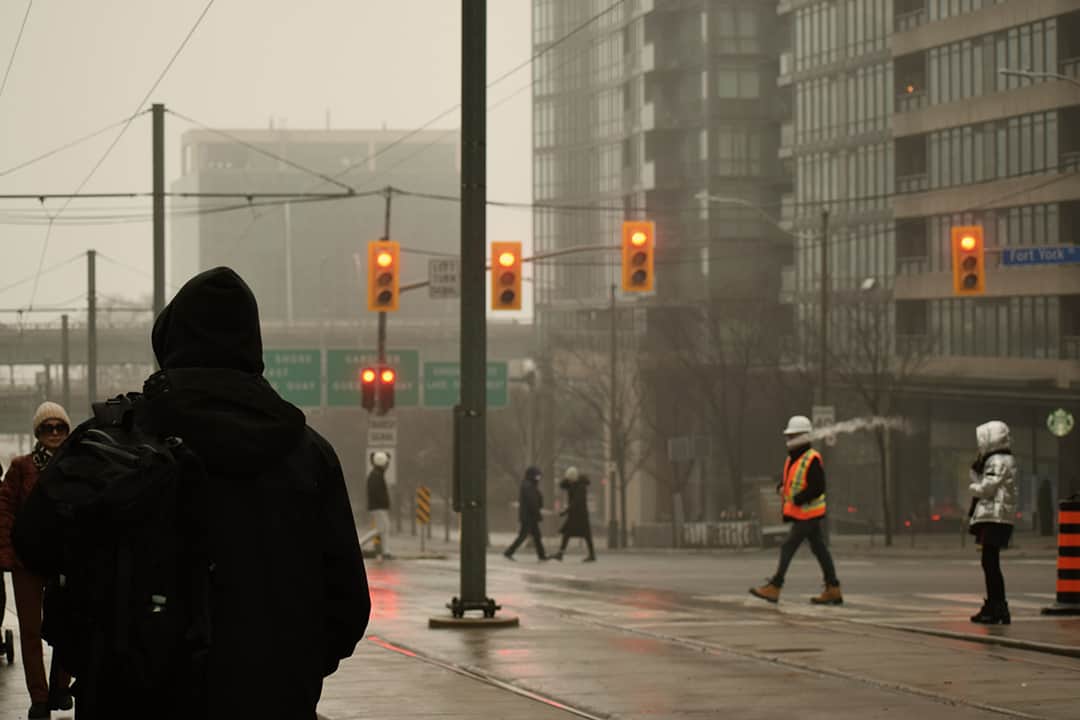Until the sudden drop in temperatures last week, Toronto’s winter seemed uncharacteristically foggy, warm, and devoid of snow for most of December and early January. However, the arrival of snow and below-freezing temperatures a couple of weeks ago brought another recurring chill: climate change denial.
Every year when colder temperatures arrive like clockwork, we start to see tweets that show piles of snow with a snarky caption like “Global Warming? Yeah right !!!” A search of the hashtag #ClimateScam yields thousands of such tweets, which present many reasons why many believe that climate change isn’t a real threat.
Recently, misinformation about the climate crisis has become more rampant as climate change deniers use new tactics to present their opinions. In 2021, Google banned ad revenue from content that denies climate change, including YouTube videos. The Centre for Countering Digital Hate (CCDH) has found that, in the past five years, the focus of climate denial YouTube channels has shifted to discrediting climate solutions, portraying climate change as harmless, or casting climate science and the environmental movement as unreliable.
It’s more important than ever to dismantle misinformed claims as they become widely spread through social media. According to a 2024 CCDH report titled The New Climate Denial, 43 per cent of adults and 56 per cent of teenagers who were highly active on social media agreed with the statement, “Humans are not the main cause of global temperature increases.”
But it’s cold!
One of the arguments that climate change skeptics use is that we still get cold weather, so the planet can’t possibly be warming. While it is true that we still see some very cold days, “climate” refers to changes in long-term, average weather patterns — and there is a clear global trend of rising temperatures.
Steve Easterbrook, the director of the School of the Environment at U of T, pointed out in a recent CBC News article that, “Climate change does not remove winter so we’re always going to have winters. What climate change does is it just shifts all those temperatures up a little on average.”
According to the National Oceanic and Atmospheric Administration, the average global temperature has risen about one degree Celsius since 1850. Due to this, even though cold snaps do occur, they are less frequent and warmer.
Emissions have no effect
Another common argument I see being made by climate change deniers online is that even if human activity increases carbon emissions, this holds no negative effects because carbon dioxide is naturally present in the atmosphere.
However, the increase in atmospheric carbon dioxide concentration caused by human activity, such as the burning of fossil fuels, means that the atmosphere is trapping a lot more of the Earth’s infrared radiation that would normally be released. This effectively heats up the planet through what is called the greenhouse effect.
Less is more
Climate change deniers also claim that carbon emissions produced by humans are negligible and cannot have a significant impact. For instance, I found one tweet that argues, “The climate scam is so obvious — it is impossible for man’s miniscule carbon emissions of 0.04 per cent to cause climate change.”
This argument is incorrect: 0.04 per cent represents the composition of carbon dioxide in the troposphere, a level of our atmosphere, relative to other gases that make up the troposphere, namely oxygen, nitrogen, and water vapour. The concentration of carbon dioxide in the mid-troposphere — the part of the atmosphere that is eight to 12 kilometres above ground — is measured in parts per million (ppm), and changes in this amount show evidence of human activity increasing carbon dioxide concentration. Before the Industrial Revolution, the atmospheric carbon dioxide concentration was 228 ppm, whereas it reached 422 ppm according to NASA’s last measurement in December 2023 — nearly doubling in amount.
While a one-degree Celsius temperature increase and the doubling of carbon dioxide concentration over almost two centuries may not seem significant, these changes reflect a shift in the delicate balance that makes our planet habitable.
You can see the signs
According to Matthew Barlow, a professor in the Department of Environmental, Earth and Atmospheric Science at the University of Massachusetts Lowell, “No single weather event can prove or disprove global warming.”
However, climate change is having long-term impacts on many communities. For instance, the Rideau Canal Skateway in Ottawa was not able to open for nearly two years due to warm temperatures preventing it from freezing over. It finally opened this year on January 21, only for it to close again on January 24 until further notice, due to rain and forecasted warmer temperatures.
Ice fishing communities in southern Ontario are also facing difficulties due to warmer winters, with local businesses, from fishing lure manufacturers to restaurants, getting only a fraction of the business they normally would. Robert McLeman, a professor of environmental studies at Wilfrid Laurier University, told CBC News that this is due to climate change, as winters are generally becoming shorter and milder.
As misinformation about the climate crisis becomes more widespread, I believe it is important that we increase efforts to educate people on the causes and effects of climate change. By addressing arguments and misconceptions, we can work toward a future in which people make informed decisions about how to address the climate crisis and the impact of their actions.
Urooba Shaikh is a third-year student at UTSC studying molecular biology, immunology, and disease, public law, and psychology. She is the Climate Crisis columnist for The Varsity’s Comment section.



No comments to display.